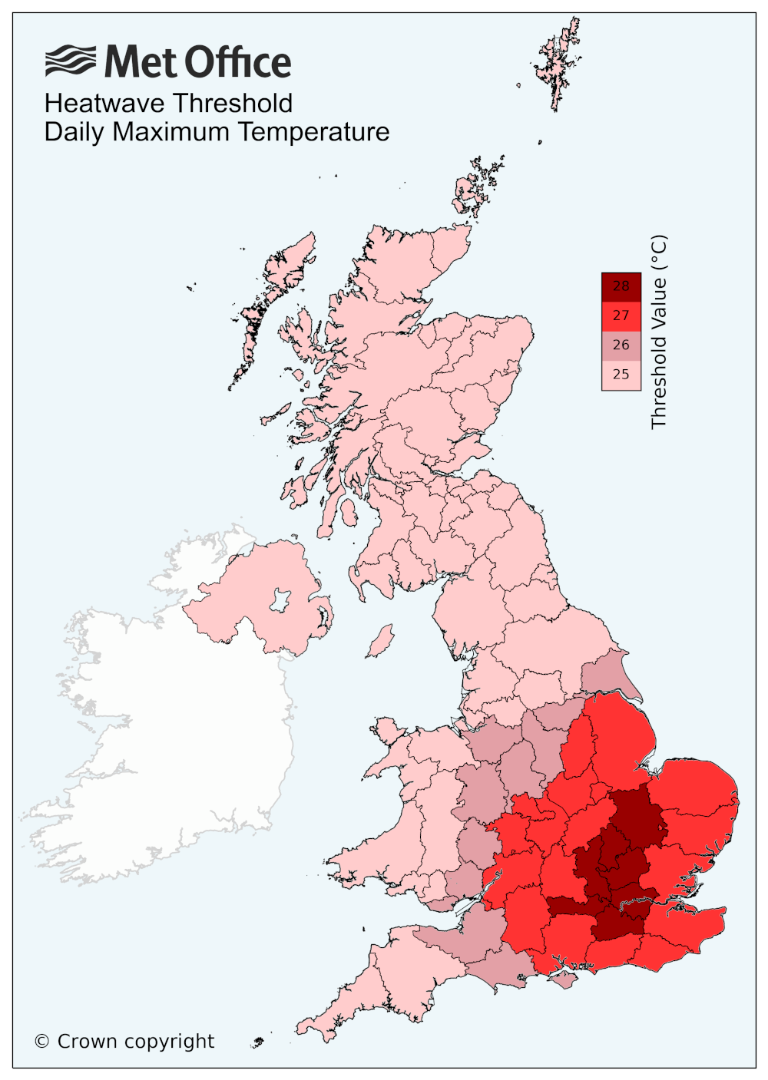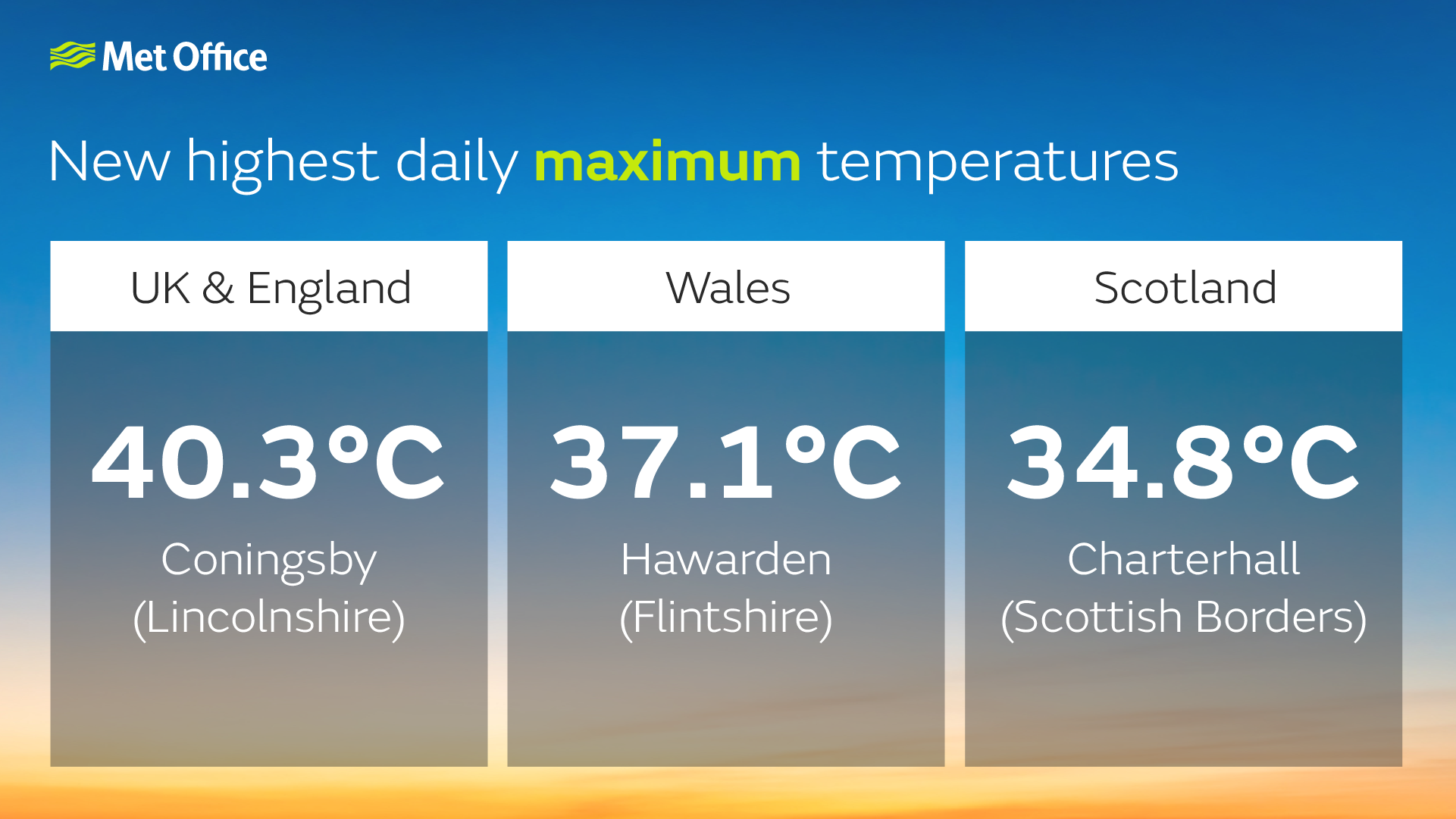What is a heatwave?
Find out more about heatwaves and what to do when they occur.
What is a heatwave?
A heatwave is an extended period of hot weather relative to the expected conditions of the area at that time of year, which may be accompanied by high humidity.
What is the definition for a UK heatwave?
A UK heatwave threshold is met when a location records a period of at least three consecutive days with daily maximum temperatures meeting or exceeding the heatwave temperature threshold. The threshold varies by UK county, see the UK temperature threshold map below.

The geographical differences reflect the differences in climate across the UK. The threshold temperatures have been calculated using the 1991-2020 climatology of daily maximum temperature at the mid-point of the meteorological summer (15 July).
Why do heatwaves happen?
Heatwaves are most common in summer when high pressure develops across an area. High pressure systems are slow moving and can persist over an area for a prolonged period of time, such as days or weeks. They can occur in the UK due to the location of the jet stream, which is usually to the north of the UK in the summer. This can allow high pressure to develop over the UK resulting in persistent dry and settled weather.
Are heatwaves linked to climate change?
Heatwaves are extreme weather events, but research shows that climate change is making these events more likely. A scientific study by the Met Office into the Summer 2018 heatwave in the UK showed that the likelihood of the UK experiencing a summer as hot or hotter than 2018 is a little over 1 in 10. It is 30 times more likely to occur now than before the industrial revolution because of the higher concentration of carbon dioxide (a greenhouse gas) in the atmosphere. As greenhouse gas concentrations increase heatwaves of similar intensity are projected to become even more frequent, perhaps occurring as regularly as every other year by the 2050s. The Earth’s surface temperature has risen by 1°C since the pre-industrial period (1850-1900) and UK temperatures have risen by a similar amount.
Heatwave impacts
The UK experiences occasional heatwaves but of a lesser frequency and intensity of those seen elsewhere globally.
A new record-high temperature for the UK of 40.3ºC was recorded at Coningsby in Lincolnshire on the 19 July 2022, along with new records for Scotland on the 19 July and Wales on the 18 July.

The extreme temperatures were recorded as the UK was impacted by an unprecedented heatwave, with the previous UK temperature record of 38.7ºC provisionally met or exceeded at 46 stations, from Kent to North Yorkshire and from Suffolk to Warwickshire.
To aid in the preparation and awareness before and during a spell of very hot weather, a heatwave plan has been created by UK Health Security Agency in association with the Met Office and other partners. It recommends a series of steps to reduce the risks to health from prolonged exposure to severe heat for:
- The NHS, local authorities, social care, and other public agencies
- Professionals working with people at risk
- Individuals, local communities and voluntary groups
Find out more about staying prepared for summer weather on our WeatherReady advice page, there are also some practical steps you can take to keep homes cool during the day.
What is the difference between the Extreme Heat Warning, Heat Health Alert, and a heatwave?
- Extreme Heat Warning – an impact-based warning designed to highlight the potential impacts of extreme heat to protect lives and property, helping people make better decisions to stay safe and thrive.
- UK Health Security Agency (UKHSA) Heat Health Alert - An England only service considering the impact of prolonged extreme heat on public health, especially those with long-term health conditions.
- Heatwave definition - a threshold-based meteorological definition designed to provide the media and public with consistent and reliable messaging.





